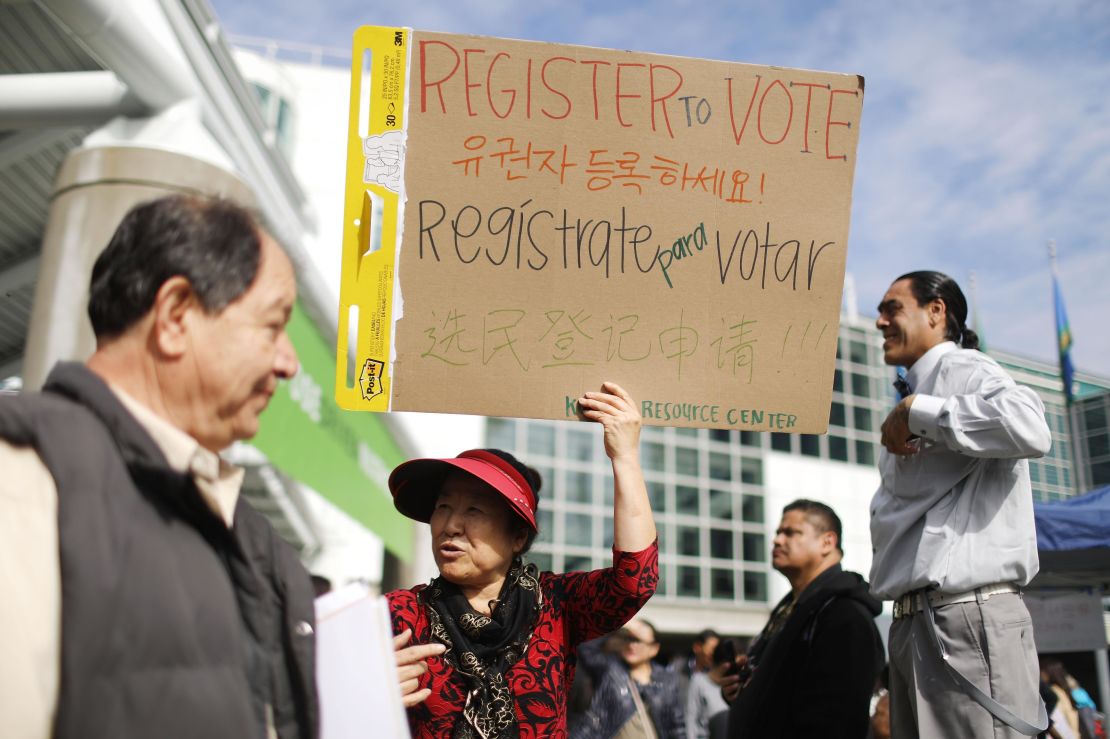There’s little doubt that immigration will be an issue many voters are weighing as they head to the polls in November.
But a new report highlights an interesting fact to think about as the 2020 presidential election looms: A record number of immigrants are eligible to vote.
The report, released Wednesday by the Pew Research Center, notes that the size of the immigrant electorate has nearly doubled since 2000. More than 23 million naturalized immigrants in the United States are eligible to vote, the report says. That’s about 1 in 10 eligible voters in the United States – a record high.
The term “eligible voters,” Pew says, refers to people aged 18 and older who are US citizens. The center’s analysis is based on data from the US Census Bureau’s American Community Survey and the 2000 US decennial census.
This growth in the immigrant voting population comes at a time when immigration policy issues have risen in importance, Pew’s report says.
“Many of the administration’s proposed policy changes, such as expanding the U.S.-Mexico border wall and limiting legal immigration, have generated strong, polarized reactions from the public,” Pew says. “These proposals may also affect how immigrants see their place in America and the potential role they could play in the 2020 presidential election.”

One key point to keep in mind: Being eligible to vote is one thing, but actually registering and showing up at the polls is another.
Historically, Pew’s report notes, the voter turnout rates for immigrant eligible voters has lagged behind US-born voters. In 2016, according to Pew, just 54% of foreign-born eligible voters cast ballots, compared to 62% of US-born eligible voters.
But within the racial and ethnic groups with the largest numbers of immigrants, the trend is different, Pew says.
“Immigrant voter turnout rates have trailed the U.S. born overall,” Pew says, “but not among Latinos and Asians.”
About 53% of Hispanic immigrants who were eligible to vote cast ballots in 2016, compared with 46% of the US born. Similarly, among Asian eligible voters, 52% of immigrants voted, compared with 45% of the US born.
Some other key findings in the report:
• Mexican and Filipino immigrants are the largest groups among foreign-born eligible voters.
• 46% of the nation’s eligible immigrant voters live in states where Democratic primaries or caucuses take place on or before Super Tuesday. This is up from 21% in 2016, Pew says, a change driven primarily by movements in the calendar of the Democratic Party’s primaries and caucuses.
• The number of immigrants living in the US is rising, but just half of immigrants in the country are eligible to vote
• The four states with the largest eligible voter populations – California, New York, Florida and Texas – are also home to most immigrant voters. “Even so,” Pew says, “immigrant eligible voters are dispersed across the nation. While California may have more immigrant voters than any other state, many states have substantial immigrant eligible voter populations.”
• The immigrant electorate is growing the fastest in Georgia, Minnesota and North Carolina. “All three have seen their numbers of immigrant eligible voters nearly triple between 2000 and 2018,” Pew says. “Georgia increased by 193% during this time, the nation’s fastest growth.”

